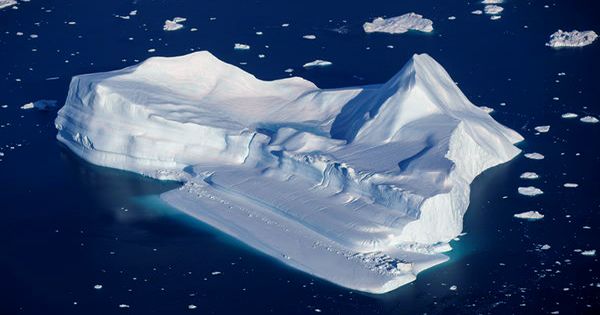The melting of an ice sheet in Norway has uncovered a pair of remarkably well-preserved skis that have been lying dormant for almost 1,300 years. The scientists who unearthed these skis believe they are the best-preserved pair of prehistoric skis ever discovered.
Secrets of the Ice, a group of glacier archaeologists who dig the receding ice sheets for long-lost treasures, discovered the first of the skis seven years ago at the Digervarden ice patch in the Norwegian county of Innlandet. Because satellite footage suggested that the ice patch had receded even more this summer, the team returned on September 20 and discovered the second ski, just 5 meters (16 feet) from the first find.
The second ski took some effort to remove from the ice and was first abandoned when they discovered, but the team returned with pickaxes and tools to boil water on a day with better weather. The second ski was eventually liberated.
The wooden ski was 187 centimeters (74 inches) long and 17 centimeters (6.5 inches) wide, slightly longer and wider than the first ski unearthed. Due to the comparable foothold, consisting of three twisted birch bindings, a leather strap, and a wooden plug, it is apparent that both were part of a pair. The footing has been repaired, indicating that the ski is well used, and the back is gone, most likely due to centuries of deterioration.
While there is little evidence of Iron Age, skis like this. It known that skiing has been practiced in Scanadvadia for at least 4,000 years. It most likely arose as a practical model of transportation through snow-capped plains and hills, rather than a fun-loving hunter-gatherer activity.
The researchers are particularly interested in what happened on Mount Digervarden 1,300 years ago to cause these skis to abandon. If the ancient skier had to abandon their journey owing to a freak snowstorm, they would have most likely left their skis upright in the snow to make them easier to detect when they returned. Furthermore, an Iron Age hunter-gatherer is unlikely to abandon an object of such skill and value unless absolutely required.
These skis, in particular, lay in a disorganized, chaotic manner. This leaves two possibilities: the skis spread by a minor avalanche, or the skier was hurt, possibly fatally. Although the researchers are unsure, they have stated that they will keep a watchful eye on the ice near Mount Digervarder for any remnants of an unfortunate skier.
















